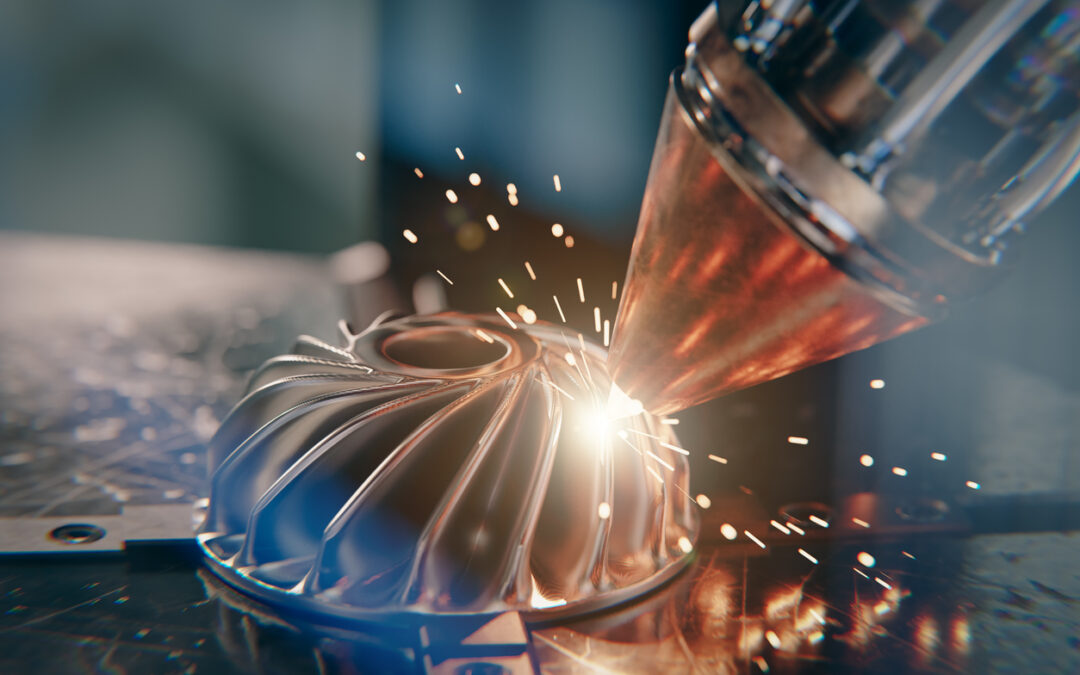Forging the Future of Additive Manufacturing
The aerospace and defense industries have always been at the forefront of innovation and technological advancement. As the demand for lighter, stronger, and more efficient components continues to grow, metal 3D printing has emerged as a game-changer in these sectors.
The applications of metal 3D printing in the aerospace and defense industries are vast and transformative. This technology empowers engineers to design and produce components that were once deemed impossible, all while reducing costs and increasing efficiency. In this blog, we’ll explore the fascinating world of metal 3D printing and its applications in aerospace and defense.
9 Applications of Metal 3D Printing in Aerospace and Defense:
1. Lightweight Structures for Aircraft:
One of the most remarkable applications of metal 3D printing in aerospace is the creation of lightweight, complex structures. Traditional manufacturing methods often rely on subtractive processes that waste material and increase component weight. Metal 3D printing, on the other hand, allows engineers to design intricate structures that reduce weight without compromising strength. This leads to more fuel-efficient aircraft, increased payload capacity, and improved overall performance.
Metal 3D printing enables the creation of intricate and lightweight components with the use of lattice infill structures that are difficult to manufacture using traditional methods. For instance, GE Aviation has used additive manufacturing to create fuel nozzles that are 25% lighter and five times more durable, reducing fuel consumption and maintenance costs.
2. Complex Geometries:
Metal 3D printing enables the production of parts that were previously impossible to manufacture through traditional methods. From turbine blades and heat exchangers to intricate brackets and nozzles, 3D printing offers unprecedented design freedom, resulting in enhanced performance and efficiency.
The defense industry often requires tailored solutions for specific applications. Metal 3D printing allows for the production of intricate engine components with complex geometries. For example, the U.S. Army Research Laboratory is using 3D printing to develop customized, high-temperature alloy components for gas turbine engines that offer improved performance and reliability.
3. Rapid Prototyping and Iteration:
Rapid prototyping is critical in both aerospace and defense. Metal 3D printing accelerates the design and development process by allowing engineers to create prototypes and iterate designs more quickly. It empowers engineers to expedite the design and development cycle by offering them the ability to craft intricate prototypes with remarkable efficiency.
This acceleration in the development process becomes a lifeline, where responding swiftly to evolving threats, missions, and emergencies is non-negotiable. In these high-stakes environments, the capability to iterate and refine designs in a fraction of the time traditionally required is not just advantageous; it’s mission-critical.
4. Cost Reduction:
Metal 3D printing can significantly reduce costs in the aerospace and defense industries. By minimizing material waste and streamlining the manufacturing process, organizations can achieve significant cost savings over traditional production methods. This is particularly advantageous for producing low-quantity, high-value components, such as those required for defense applications.
Metal 3D printing significantly reduces lead times and production costs by minimizing material wastage and lowering tooling expenses. For instance, SpaceX has employed 3D printing to produce the SuperDraco engines used in their Crew Dragon spacecraft, which has contributed to cost-effective space travel.
5. Repair and Maintenance:
Aerospace and defense equipment must undergo rigorous maintenance and repair. Metal 3D printing facilitates the rapid replacement of damaged components, reducing downtime and ensuring that critical equipment is always ready for deployment. Whether it’s a fighter jet, a missile system, or a satellite, the ability to create on-demand replacement parts is a game-changer.
Maintaining and repairing military aircraft and defense equipment is a complex and costly task. Metal 3D printing allows for on-site repairs and the production of replacement parts, reducing downtime and costs. This is particularly advantageous for remote military operations where quick repairs are crucial.
6. Material Variety:
Metal 3D printing is not limited to a single type of metal. The aerospace and defense industries can utilize a wide range of materials, including titanium, aluminum, stainless steel, and more. This flexibility allows engineers to choose the best material for a specific application, optimizing performance and durability.
Aerospace and defense applications often require materials that can withstand extreme temperatures. Metal 3D printing can create components from specialized heat-resistant materials like titanium and nickel alloys. This is especially beneficial for military jets and rockets that experience high levels of heat and pressure during operation.
7. Stealth Technology:
In the defense sector, stealth technology is crucial for maintaining a tactical advantage. Metal 3D printing enables the production of intricate components and surfaces that can help reduce radar cross-section and enhance the stealth capabilities of military aircraft and vehicles.
8. Satellite Components:
The space industry relies on lightweight and highly reliable components for satellites. Metal 3D printing allows for the creation of intricate components that are both lightweight and robust, ensuring the success of space missions.
9. Sustainable Manufacturing:
In a world increasingly focused on sustainability, metal 3D printing stands out as an eco-friendly alternative. The technology produces less waste, consumes less energy, and often requires fewer transportation resources, contributing to a greener future for aerospace and defense industries.
Metal 3D printing’s energy efficiency, compared to conventional manufacturing processes, is a stride towards reducing carbon footprints. The ability to produce components on-site, reducing the need for resource-intensive transportation, is a pivotal step towards a greener future. In a world where ecological considerations are becoming integral to business operations, metal 3D printing is a testament to the aerospace and defense industries’ commitment to responsible, sustainable practices. It embodies the promise of achieving both technological excellence and environmental consciousness in the pursuit of a better, more sustainable world.
As these industries continue to evolve, metal 3D printing will undoubtedly play a pivotal role in shaping the future of aerospace and defense. It’s an exciting time for innovation and advancement in these crucial sectors, thanks to the remarkable capabilities of metal 3D printing.
At Nota3D, our team is the most responsive in the industry—solving issues, developing solutions, and delivering materials faster than anyone else on the market. We work tirelessly to bring you what you need when you need it.
Finding the right 3D printer might seem complicated at first. That’s why we’re here! Check out some information about the different printers we offer but don’t stop there. Give us a call or contact us by email so we can help narrow down the lineup to options that are the best possible fit for your specific applications.

